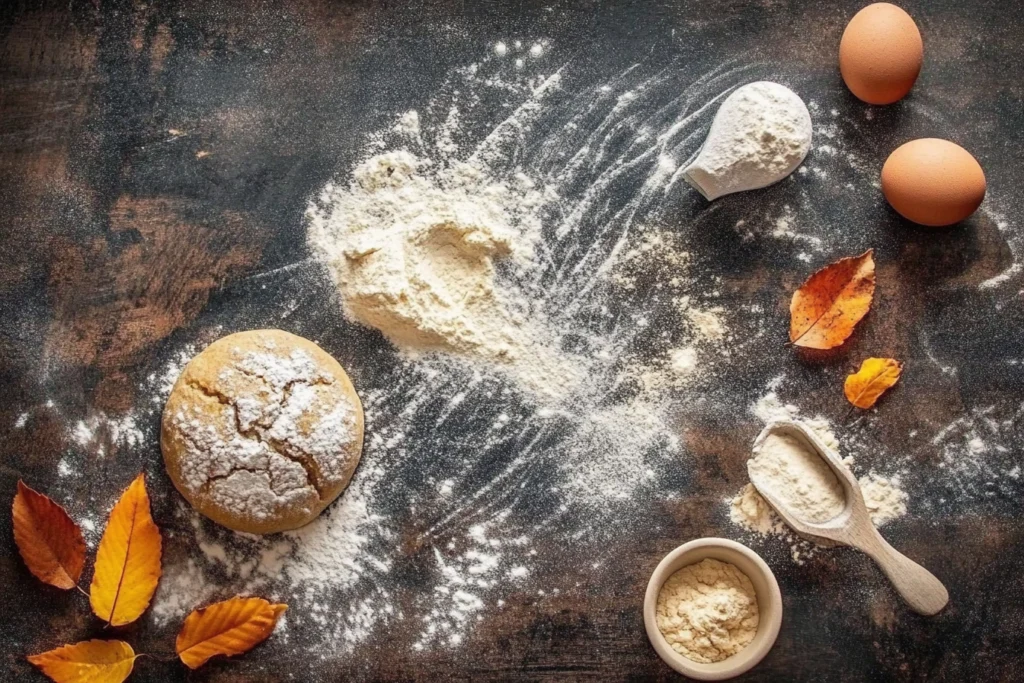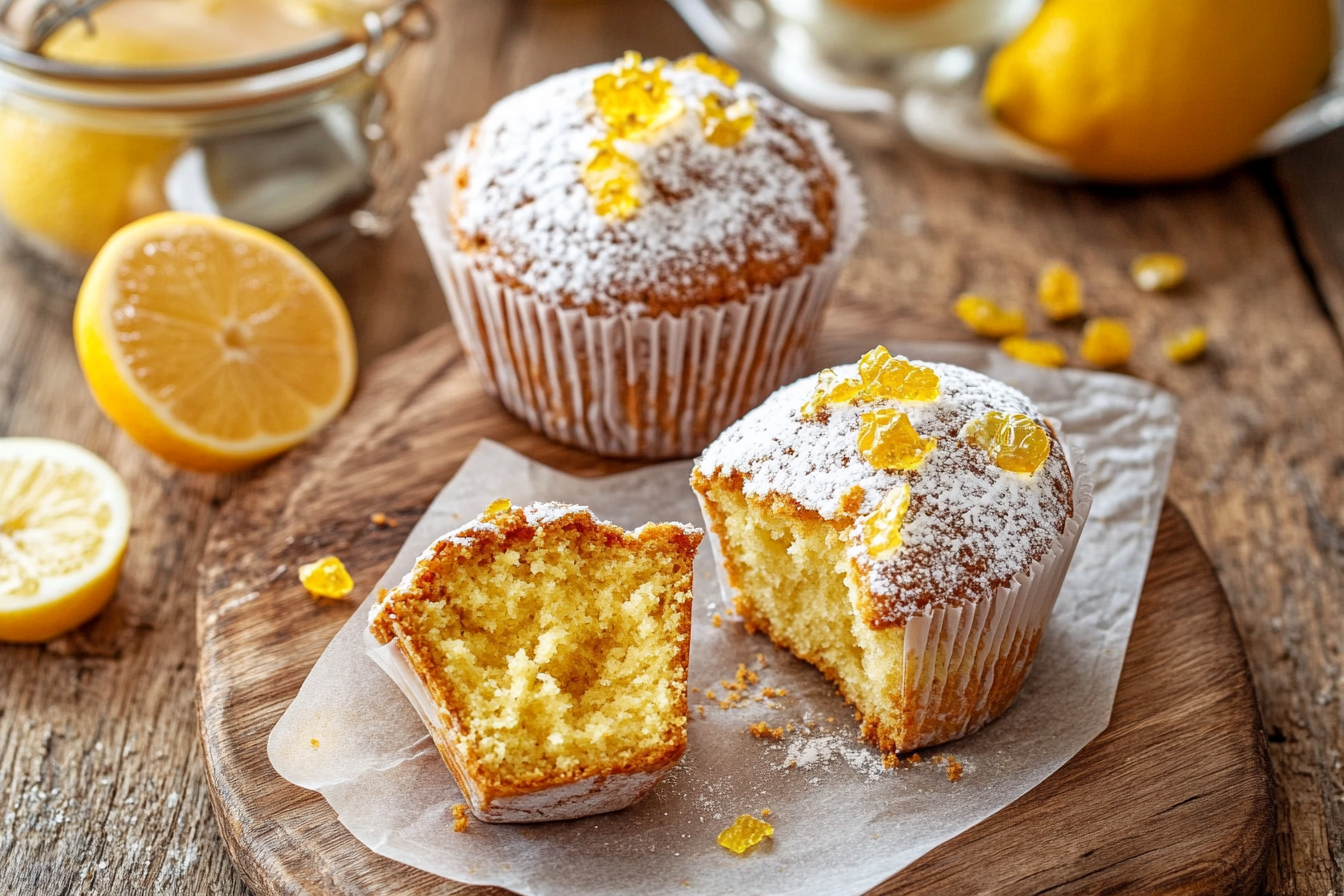Cream of tartar, a common yet mysterious ingredient, plays a crucial role in baking, especially in achieving the ideal texture and flavor in cookies like snickerdoodles. Derived as a byproduct of wine production, cream of tartar (potassium bitartrate) is a versatile acid that ensures your baked goods rise beautifully and maintain a tender crumb. But what The Role of Cream of Tartar in Baking, and why is it irreplaceable for many recipes?
In baking, cream of tartar primarily acts as a stabilizing agent for whipped egg whites, ensuring they hold their shape when folded into batters or baked into meringues. It also activates baking soda in recipes, producing carbon dioxide gas that helps baked goods rise. Additionally, it prevents sugar from crystallizing, making it a key component in frostings and syrups. Without cream of tartar, achieving the same results often becomes a challenge, but substitutes can sometimes come close.
Cream of Tartar in Snickerdoodles
Snickerdoodles, the classic cinnamon-sugar cookies, owe their signature tangy flavor and chewy texture to cream of tartar. This ingredient reacts with baking soda to create the slight acidity that sets snickerdoodles apart from sugar cookies.
Beyond flavor, cream of tartar also contributes to the cookies’ unique texture. It helps create a soft, pillowy interior while preventing the cookies from spreading too much during baking. This balance of acidity and stability ensures the iconic crackled tops and rich cinnamon aroma snickerdoodles are known for. When omitted, the cookies may lack that characteristic bite, leaning more toward a standard sugar cookie.
Chemical Properties and Reactions
Cream of tartar is an acid that reacts with alkaline substances like baking soda. This acid-base reaction produces carbon dioxide gas, which expands in the heat of the oven, causing the dough to rise. In snickerdoodles, this reaction is essential for the light, airy texture while also contributing to the tangy undertones that make the cookies distinct.
The acid also stabilizes whipped egg whites by lowering their pH, which tightens the protein structure. This is why cream of tartar is indispensable in recipes requiring stiff peaks, such as soufflés or angel food cakes. In cookies, it enhances the cohesiveness of the dough, preventing crystallization and ensuring even mixing of ingredients.
Common Baking Substitutes
If you find yourself without cream of tartar, don’t panic! There are several viable substitutes. Here are the most common ones:
- Baking Powder: Since it already contains cream of tartar, it’s the easiest direct replacement.
- Lemon Juice: A natural acidic substitute that complements baked goods with a fresh flavor.
- White Vinegar: A sharp, accessible alternative found in most kitchens.
- Buttermilk: Adds tanginess and moisture, perfect for snickerdoodles.
- Yogurt: A creamy option that works well in small quantities.
Each substitute has its own pros and cons, especially in recipes like snickerdoodles where both flavor and texture are critical.
How Substitutes Impact the Cookie Texture
Replacing cream of tartar can significantly alter the texture of snickerdoodles. For example:
- Baking powder can make the cookies puffier and less chewy.
- Lemon juice or vinegar might create a slight sourness, shifting the delicate flavor balance.
- Buttermilk and yogurt add moisture, which can lead to denser cookies if not adjusted for properly.
Each substitute interacts differently with other ingredients, potentially changing the spread, rise, or chewiness of the cookies.
Taste Variations with Substitutes
The tangy flavor of cream of tartar is subtle yet essential to snickerdoodles. Substituting with lemon juice or vinegar can amplify sourness, creating a different but enjoyable flavor profile. Baking powder, on the other hand, may neutralize the tanginess altogether, leading to cookies that taste closer to traditional sugar cookies.
Experimenting with different substitutes allows bakers to explore a spectrum of flavors, from the bright citrus of lemon juice to the mild acidity of yogurt. However, it’s essential to adjust the cinnamon-sugar coating to complement these variations and retain the snickerdoodle essence.
Allergy-Friendly Cream of Tartar Alternatives
For those with sensitivities or dietary restrictions, several options work well:
- Citric Acid: Often sold as a food-grade powder, it’s allergen-free and easy to store.
- Vinegar: A hypoallergenic choice that’s widely available.
- Plant-Based Yogurt: Suitable for vegans or those avoiding dairy.
Each option provides acidity, ensuring the cookies rise properly and maintain their structure. However, adjusting quantities and taste balance is key to ensuring an allergy-friendly alternative doesn’t overpower the cookies.
Nutritional Impact of Alternatives
Cream of tartar itself contains negligible calories or nutrients, but its substitutes can vary in their nutritional profiles:
- Buttermilk and yogurt add calcium and probiotics but increase calorie content.
- Lemon juice and vinegar are low in calories but offer vitamins like vitamin C.
- Baking powder contributes slightly more sodium than cream of tartar.
Choosing the right substitute depends on your dietary priorities, whether it’s reducing calories, maintaining a low-sodium diet, or adding nutritional value.
Storage and Shelf-Life of Cream of Tartar
Cream of tartar is a long-lasting pantry staple when stored correctly. Keep it in a cool, dry place, sealed in its original container, and away from humidity. Properly stored, it can last several years, though it’s a good idea to check for clumps or loss of potency over time.
Testing its effectiveness is easy: mix a small amount with baking soda and warm water. If the mixture fizzes, your cream of tartar is still good to use.

Why People Avoid Cream of Tartar
Some bakers avoid cream of tartar due to:
- Cost: It can be pricier compared to common pantry staples.
- Availability: It’s not always stocked in smaller grocery stores.
- Dietary Restrictions: While rare, some people might be sensitive to additives in commercial products.
Understanding why people might skip cream of tartar helps explore alternative methods to achieve the same delicious results without compromising on quality.
Substitutes for Cream of Tartar in Snickerdoodles
When baking snickerdoodles, cream of tartar is often a key ingredient, but it’s not always available or suitable for everyone. Thankfully, there are several effective substitutes that can mimic its role in creating delicious, tangy cookies. Each alternative brings its own properties, benefits, and challenges, making it essential to choose the right one based on your recipe and personal preferences.
Baking Powder as a Substitute
Baking powder is the most straightforward substitute for cream of tartar because it already contains it as a component. As a combination of cream of tartar and baking soda, it provides the necessary acid-base reaction needed for the cookie dough to rise.
Usage Tips:
- Replace 1 teaspoon of cream of tartar and ½ teaspoon of baking soda with 1½ teaspoons of baking powder.
- Since baking powder is less acidic than cream of tartar, it may slightly reduce the tangy flavor of snickerdoodles.
Baking powder ensures proper leavening but can result in puffier, less chewy cookies due to its balanced composition.
Lemon Juice: A Natural Acid Substitute
Lemon juice is a natural and flavorful option for substituting cream of tartar. Its acidity activates baking soda, replicating the chemical reaction needed for snickerdoodles.
Usage Tips:
- Use 1 teaspoon of lemon juice for every ½ teaspoon of cream of tartar.
- Adjust liquid ingredients in the recipe to prevent excess moisture.
Lemon juice adds a mild citrus note to the cookies, enhancing their flavor profile while retaining the soft texture. It’s an excellent choice if you don’t mind a subtle shift in taste.
White Vinegar as a Cream of Tartar Alternative
White vinegar is a readily available option in most kitchens. Its acidity works similarly to cream of tartar, ensuring proper leavening in baked goods.
Usage Tips:
- Substitute 1 teaspoon of cream of tartar with 1 teaspoon of white vinegar.
- Mix vinegar with the liquid ingredients to ensure even distribution.
Although vinegar is effective, its sharp taste may slightly alter the flavor of snickerdoodles. Pairing it with a stronger cinnamon-sugar coating can help balance the taste.
Yogurt for Baking Acidity
Yogurt is a creamy substitute that provides both acidity and moisture to the dough. It’s a great option for those looking for a slightly tangier cookie.
Usage Tips:
- Use 2 teaspoons of plain yogurt for every 1 teaspoon of cream of tartar.
- Reduce other liquids in the recipe to prevent an overly wet dough.
Yogurt enhances the softness and chewiness of snickerdoodles while introducing a richer flavor. For best results, use unsweetened and unflavored varieties.
Buttermilk as an Acidic Substitute
Buttermilk is another tangy alternative that works well in snickerdoodles. Its acidity mimics cream of tartar while adding a creamy richness.
Usage Tips:
- Substitute ¼ cup of buttermilk for every 1 teaspoon of cream of tartar and reduce other liquids in the recipe accordingly.
- Pair buttermilk with baking soda for proper leavening.
Buttermilk’s tangy flavor complements the cinnamon-sugar coating but can result in slightly denser cookies due to the added moisture.
Citric Acid as a Direct Substitute
Citric acid, often available as a food-grade powder, is a highly concentrated alternative to cream of tartar. It’s ideal for those looking for a long-lasting pantry ingredient.
Usage Tips:
- Replace ½ teaspoon of cream of tartar with ¼ teaspoon of citric acid.
- Dissolve the citric acid in water before adding it to the dough for even distribution.
While citric acid effectively replicates the tanginess and leavening properties of cream of tartar, it can be too sour if overused. Careful measurement is key.
Apple Cider Vinegar for a Milder Flavor
Apple cider vinegar offers a gentler acidity compared to white vinegar, making it a better option for those sensitive to sharp flavors.
Usage Tips:
- Use 1 teaspoon of apple cider vinegar for every ½ teaspoon of cream of tartar.
- Combine it with baking soda to ensure proper leavening.
Its subtle fruity notes can enhance the overall flavor of snickerdoodles, creating a unique twist on the classic recipe.
Sour Cream in Baking Recipes
Sour cream is another creamy option that adds both acidity and moisture. It’s perfect for creating rich, tender cookies.
Usage Tips:
- Replace 1 teaspoon of cream of tartar with 2 teaspoons of sour cream.
- Reduce other liquid ingredients to maintain the correct dough consistency.
Sour cream gives snickerdoodles a slightly denser texture but enriches the flavor with its tangy undertones.
Whey Powder as a Substitute
Whey powder, a byproduct of cheese-making, contains natural acids that can replicate the role of cream of tartar.
Usage Tips:
- Use 1 teaspoon of whey powder for every ½ teaspoon of cream of tartar.
- Mix it thoroughly with dry ingredients to ensure even leavening.
Whey powder provides a subtle tanginess while also adding a hint of protein to the cookies, making it a nutritious option.
Omitting Cream of Tartar Altogether
While not ideal, it is possible to skip cream of tartar entirely. However, doing so will impact the texture and flavor of the cookies.
What to Expect:
- Cookies may lack the tangy flavor that defines snickerdoodles.
- They might spread more during baking, resulting in thinner, crispier cookies.
If you decide to omit cream of tartar, consider increasing the baking soda slightly to compensate for the lost leavening effect.
Mastering Snickerdoodles with Substitutes
Substituting cream of tartar in snickerdoodles is more than just swapping ingredients—it’s about maintaining the perfect balance of flavor and texture. With the right approach, you can create cookies that are just as delicious as the originals while exploring new variations.
Adjusting Recipes with Substitutes
When using substitutes for cream of tartar, it’s important to account for the acid-base balance in your recipe. Each substitute has a unique acidity level, which affects the dough’s rise and the cookie’s texture. For liquid substitutes like lemon juice, vinegar, or buttermilk, reduce the amount of other liquids in the recipe to avoid a wet or sticky dough.
Tips for Adjustments:
- Use precise measurements to ensure the chemical reactions occur as intended.
- Balance the acidity with a slight increase in sweetness, especially when using sharp substitutes like vinegar or citric acid.
- Mix substitutes evenly to avoid uneven texture or flavor pockets in the cookies.
Common Mistakes When Using Substitutes
Substituting cream of tartar can sometimes lead to pitfalls that affect the outcome of your cookies. Here’s what to watch out for:
- Overpowering Flavors: Strong substitutes like vinegar or citric acid can overwhelm the cinnamon-sugar flavor. Use them sparingly and adjust the coating to balance the taste.
- Excess Moisture: Liquid substitutes like buttermilk or yogurt can make the dough too wet, leading to spreading during baking. Always account for the added liquid.
- Under-leavening: Using insufficient substitute quantities can prevent proper rising, resulting in dense cookies.

Preserving Snickerdoodle Flavor Profile
One of the hallmarks of snickerdoodles is their tangy flavor and warm cinnamon-sugar coating. When using substitutes, aim to retain this balance:
- Increase the cinnamon in the sugar coating to complement stronger substitutes like vinegar or lemon juice.
- For a creamier substitute like yogurt or sour cream, consider adding a touch of vanilla extract to enhance the overall flavor profile.
- Always taste-test your dough before baking to ensure the flavor remains true to the classic snickerdoodle.
Testing Substitutes in Small Batches
Before committing to a full recipe, experiment with substitutes in small batches. This allows you to identify how each alternative impacts the flavor, texture, and appearance without risking an entire batch of cookies. Note any changes and adjust accordingly for the next attempt.
Storing Cookies Made with Substitutes
Cookies made with substitutes may have slight differences in shelf life:
- Moist Substitutes: Cookies made with yogurt or buttermilk may stay soft longer but could become overly moist if not stored in an airtight container.
- Dry Substitutes: Using baking powder or citric acid tends to produce cookies with a standard shelf life. Keep them sealed to retain freshness.
Mastering snickerdoodles with substitutes requires attention to detail and a willingness to experiment. With the right techniques, you can achieve the perfect balance of taste, texture, and tanginess, no matter which substitute you choose.
Top FAQs About Cream of Tartar Substitutes in Snickerdoodles
- Can I make snickerdoodles without cream of tartar?
Yes, you can use substitutes like baking powder, lemon juice, or vinegar, though the cookies may lose some tangy flavor. - What is the easiest substitute for cream of tartar?
Baking powder is the simplest option since it already contains cream of tartar and won’t affect the flavor drastically. - Does leaving out cream of tartar change the texture?
Yes, snickerdoodles may spread more and lose their chewy texture, becoming closer to sugar cookies. - How does lemon juice affect snickerdoodles?
Lemon juice adds tanginess but may make the cookies slightly wetter if the liquid ratio isn’t adjusted. - Are there dairy-free substitutes for cream of tartar?
Yes, options like lemon juice, vinegar, and citric acid are all dairy-free and effective in baking. - Will cookies made with substitutes last as long?
Generally, yes, but moist substitutes like yogurt may slightly shorten their shelf life if not stored properly.

